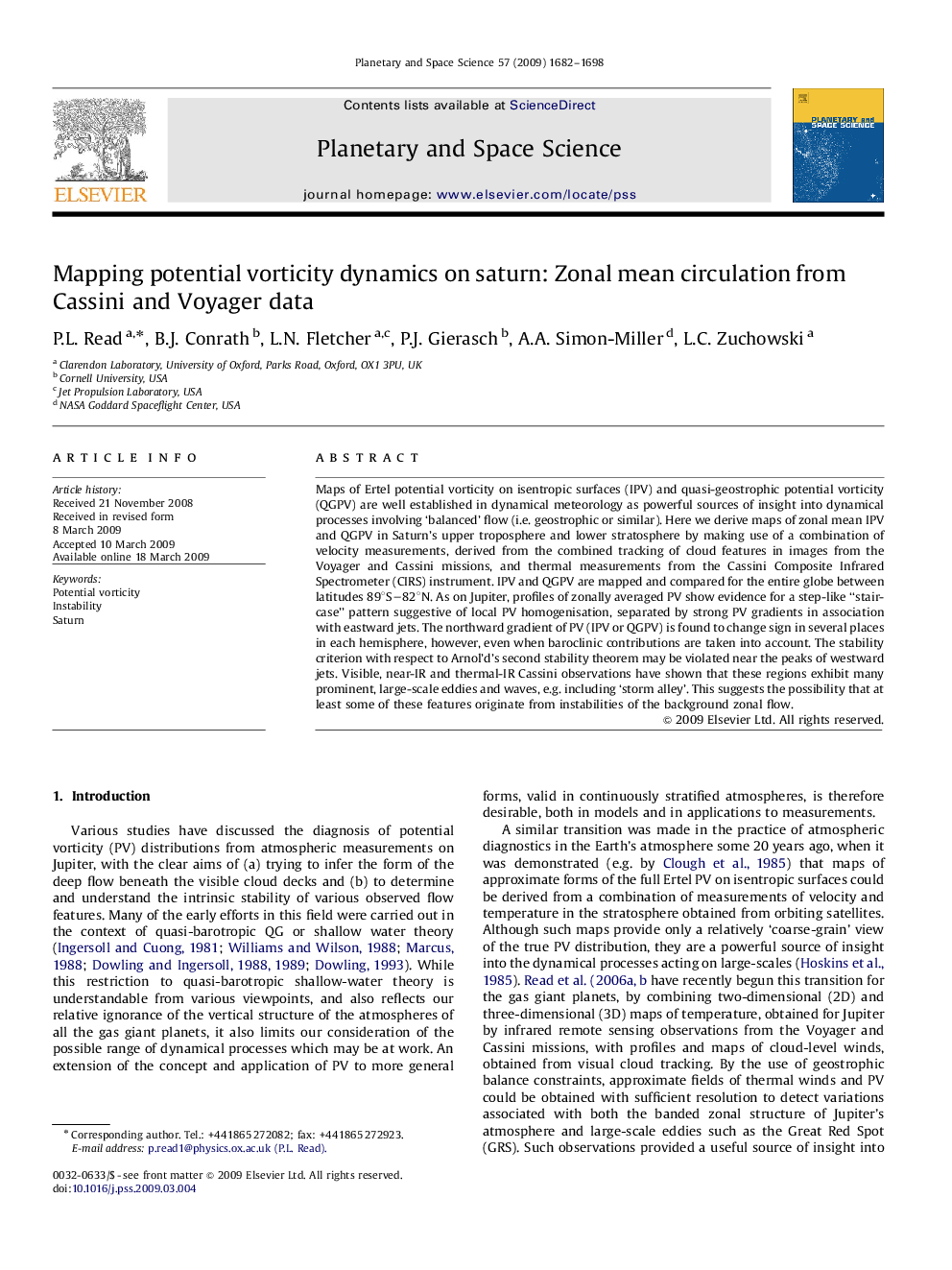| Article ID | Journal | Published Year | Pages | File Type |
|---|---|---|---|---|
| 1781924 | Planetary and Space Science | 2009 | 17 Pages |
Maps of Ertel potential vorticity on isentropic surfaces (IPV) and quasi-geostrophic potential vorticity (QGPV) are well established in dynamical meteorology as powerful sources of insight into dynamical processes involving ‘balanced’ flow (i.e. geostrophic or similar). Here we derive maps of zonal mean IPV and QGPV in Saturn's upper troposphere and lower stratosphere by making use of a combination of velocity measurements, derived from the combined tracking of cloud features in images from the Voyager and Cassini missions, and thermal measurements from the Cassini Composite Infrared Spectrometer (CIRS) instrument. IPV and QGPV are mapped and compared for the entire globe between latitudes 89∘S–82∘N89∘S–82∘N. As on Jupiter, profiles of zonally averaged PV show evidence for a step-like “stair-case” pattern suggestive of local PV homogenisation, separated by strong PV gradients in association with eastward jets. The northward gradient of PV (IPV or QGPV) is found to change sign in several places in each hemisphere, however, even when baroclinic contributions are taken into account. The stability criterion with respect to Arnol’d's second stability theorem may be violated near the peaks of westward jets. Visible, near-IR and thermal-IR Cassini observations have shown that these regions exhibit many prominent, large-scale eddies and waves, e.g. including ‘storm alley’. This suggests the possibility that at least some of these features originate from instabilities of the background zonal flow.
